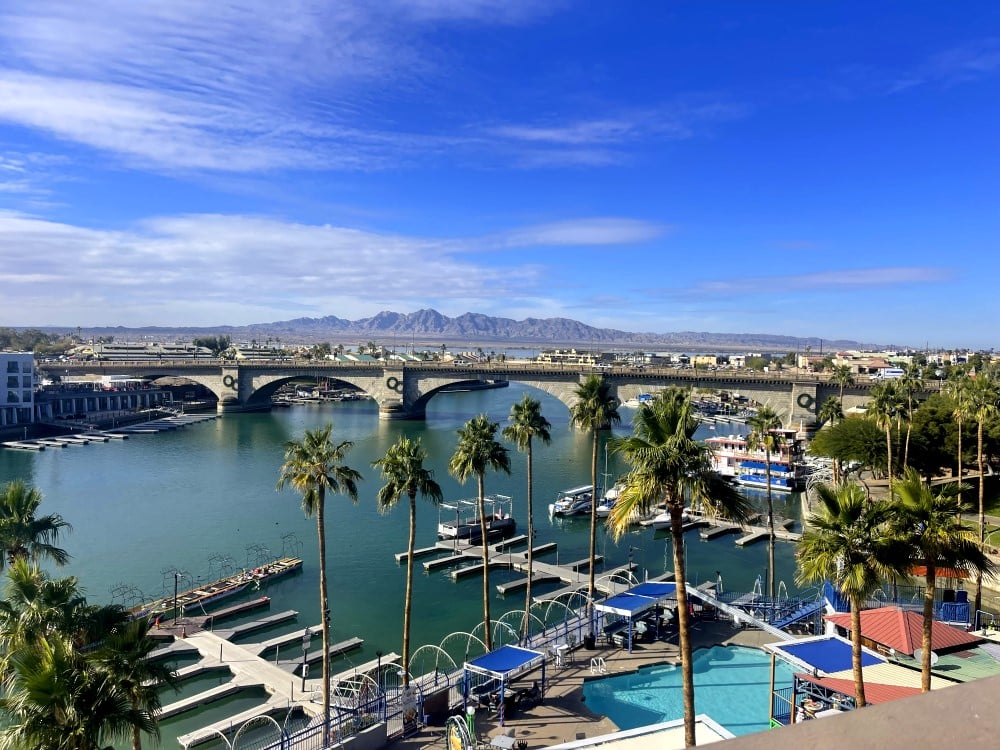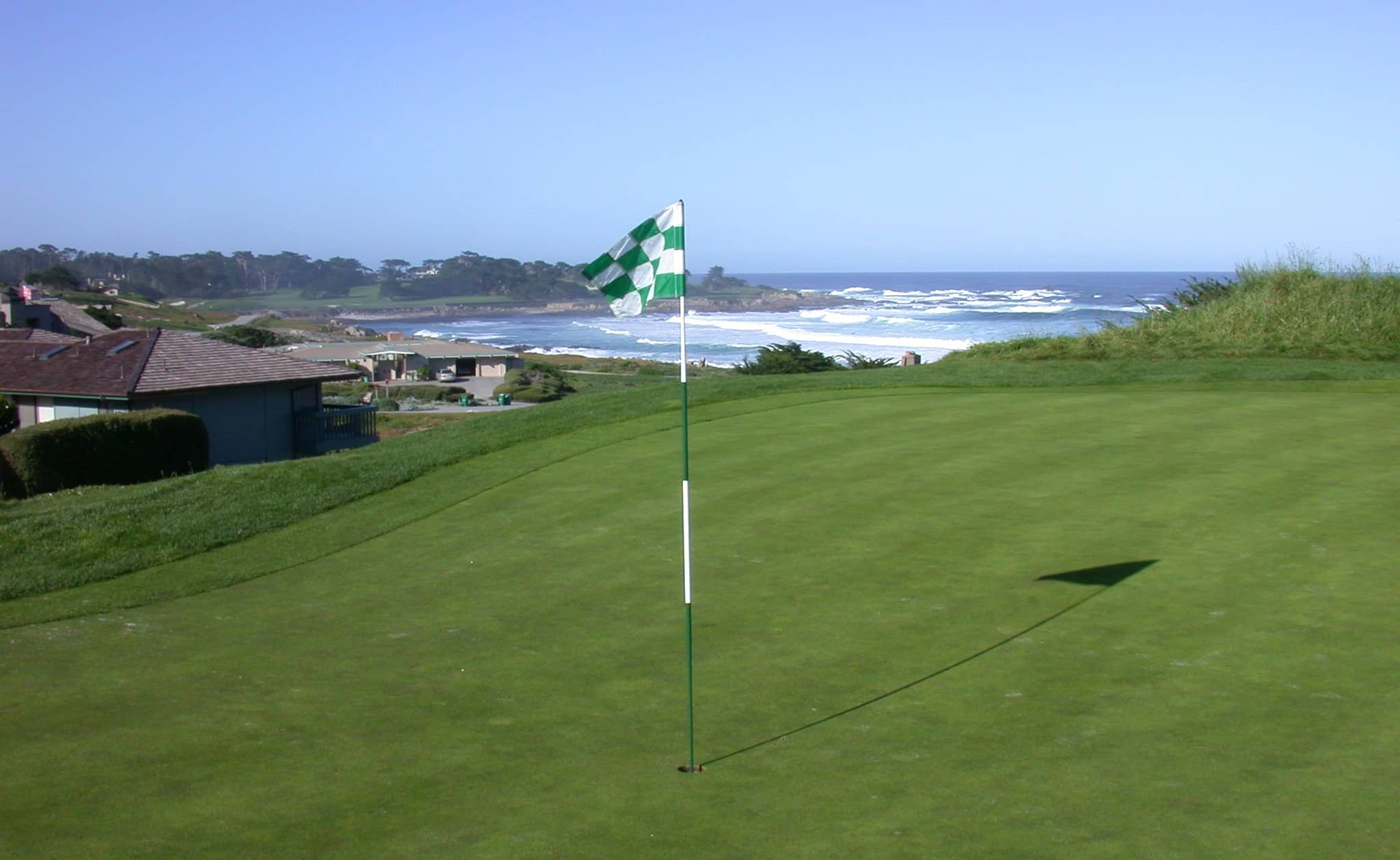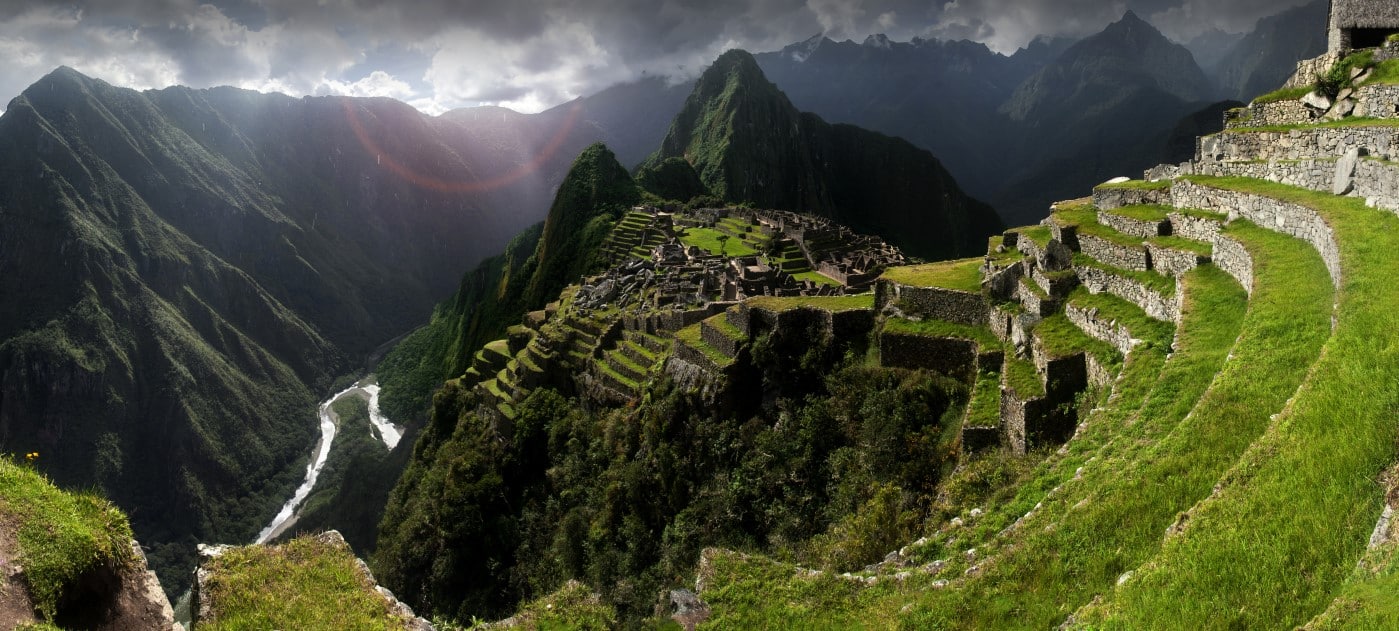
Perched majestically above the Urubamba River Valley, Machu Picchu stands as a testament to the ingenuity and artistry of the Inca civilization. This ancient citadel, hidden amidst the lush Peruvian Andes, has captivated the imagination of travelers, historians, and archaeologists for centuries. Its intricate stone construction, seamless integration with the natural landscape, and mysterious origins contribute to an aura of enchantment that surrounds the site. Once a royal estate for Inca emperors, Machu Picchu’s precise function remains a subject of scholarly debate, adding an intriguing layer of mystery to its undeniable allure. Today, visitors from around the globe trek to this UNESCO World Heritage Site, eager to experience its beauty, delve into its history, and stand in awe of one of the most iconic remnants of pre-Columbian America.
Our Journey
Clouds and hilltops streamed past the window as the iron condor gently rolled with the valley into the Incan heartland. Llamas grazed uncomfortably close, ambivalent to yet another flying load of tourists whose imagination could already see a city in ruin perched atop tropical mountains, Machu Picchu.
We were with the usual herd: backpacking hipsters, wealthy locals, and brown-socked Nikon toters playing hooky from Bingo night and fashion. My wife Adriana struggled through the thin air to keep up with Brian, who bolted down the jet bridge in an explosion of repressed toddler energy. Our companion, Andy, battled through a perfect storm of low oxygen, virus, and flight nausea. So, each at our preferred paces of sprint, walk, and stagger, we took our first steps into the land of the Inca.
Cusco, the capital of the once massive empire, is chock full of treasures and could be a destination in itself. But no one has a Cusco screensaver, or mousepad, or calendar. It has been relegated to a necessary, and practically unavoidable, waypoint to that bucket list vista that is the travelers’ crown jewel of Machu Picchu.
In my bachelor days I would wing in while traveling. I’d wing enough to supply KFC for a week. Now a family man, I had to prepare everything in advance. Flight to Lima? Check. Flight to Cusco? Check. Rental car? Got it. Train tickets? Damn straight. Hotels? Only the finest of the middle tier, baby! Details could be sorted out when we arrived – Wrong.

When the fantasy of fun times, free drinks, and endless relaxation cleared, I found us in the airport parking lot, staring blankly at the Cusco hills beside a 6 foot stack of luggage (don’t ask). Taxis were barking bad offers at us, vying for the few Soles (their currency) we had been given by the bandit at the currency exchange. Brian sprinted in circles in the lot with a malodorous smell in the air. It turned out that the major rental chain I reserved with didn’t actually exist at or even near the airport, despite my printed confirmation to the contrary. And yes, Brian had pooped.
With four passengers and seven pieces of luggage, a taxi ride too graphic to describe dumped us downtown at the front of a non-imaginary auto rental whose office had less volume than our luggage. I bent over (in both senses) to sign a new bloated rental contract while Andy babysat our princess-sized pile of luggage on the narrow sidewalk. Had I known that Hotel Torre Dorada, where we had a reservation for our return to Cusco, would have picked us up, shown us around town and stored our excess luggage for three days, life would have been better and mistakes avoided. Actually, if I had known how wonderful and generous the hotel was, we may have never left Cusco. Book them, they are magnificent.
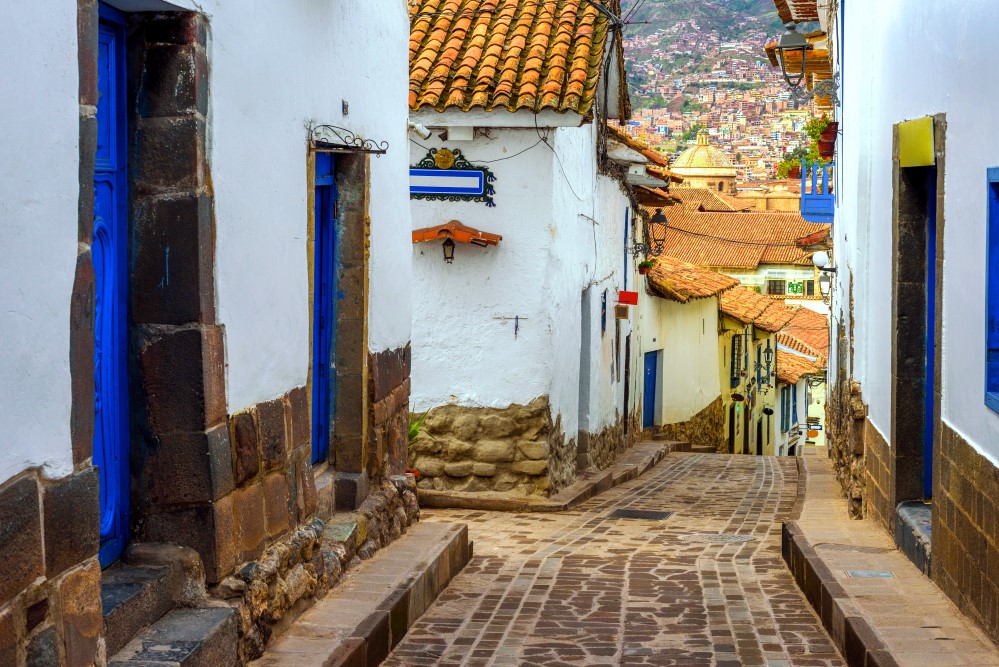
Cusco
WARNING! Cusco’s streets were made for llamas by drunken conquistadors. The Spanish introduced the wheel to Peru, but forgot to bring cartography and street signs. The concept of disseminating route information via ink and paint for the benefit of motorists is as familiar to Peruvians as parrots are with spaghetti. I’m amazed Pizarro ever found the place. Local maps seem to be drawn from an old man’s weak recollection. Map scaling is made with “artistic interpretation”, and street locations correlate with reality only within the most flexible, imaginative, and perhaps even perverted minds. One shouldn’t drive Cusco without a good map, a planned route, a good navigator, and a satisfactory last Will and Testament. We were 0 for 4.
Nevertheless, we threaded the comically narrow, one-way stone-walled streets guided by a map resembling a McDonald’s activity sheet. Our oversized pickup truck lurched beneath the ancient buildings like fjording Vikings in a fattened warship. Pedestrians slipped quickly into alcoves to avoid becoming racing stripes on our side panel. Cusco loves visitors, so much so that they’ve conspired to deny us exit signage. In an effort to find that one tiny neighborhood path that escapes town, we turned at every corner in what must have seemed from above like a pathetically slow game of Pac Man. Finally by skill, process of elimination, or just dumb luck, one of our little roads became a little highway aimed toward the Sacred Valley and Ollantataytambo, where we were just a few hours away from missing the train and our one and only shot at Machu Picchu. As the clock ticked closer to disappointment, we snaked our way up the plateau as high as 12,400 ft., until we began our gradual descent into the Sacred Valley, the Incan homeland full of historic towns and ruins. Racing toward the train station, I could sense the excitement in the air. It sounded like three people snoring.

Ollantataytambo
Let me back up a tad. There are three ways to get to Machu Picchu: Parachuting (likely illegal), hiking 4 days on the Inca Trail (likely painful), and the train. Peru Rail has the monopoly and can be boarded at Cusco, or Ollantataytambo, which is halfway down the line. The train’s destination is Aguas Calientes, a touristy village in the deep shadows of Machu Picchu. Our tickets were purchased online months before (advisable), departing from Ollantataytambo because the Cusco leg is often rain damaged during the wet season (Jan-Apr). Our master plan was to take the train, see Machu Picchu, return two days later, then drive the length of the Sacred Valley. Like every red-blooded American we wanted to explore on our own schedule without the ease and practically of public transportation or tours.
Daylight yielded to twilight as we slipped past towns with names as colorful as the brash and tacky advertisements that cover every building and wall in Peru: Cachimayo, Chinchero, Urubamba. We were actually descending from Cusco (elev. 11200ft.) to Machu Picchu (elev. 7972ft.), which lies in the rugged and lush transition between the dry Andean plateau and the tropical Amazon basin. We plowed ahead toward fewer and fewer signs of civilization until at last the narrowing walls of the valley flushed out the last glint of natural light. Although there was just one simple road line on the valley map, a dark and bumpy detour an hour before departure made me seriously wonder if we should have taken a left at Albuquerque. I crossed my fingers.
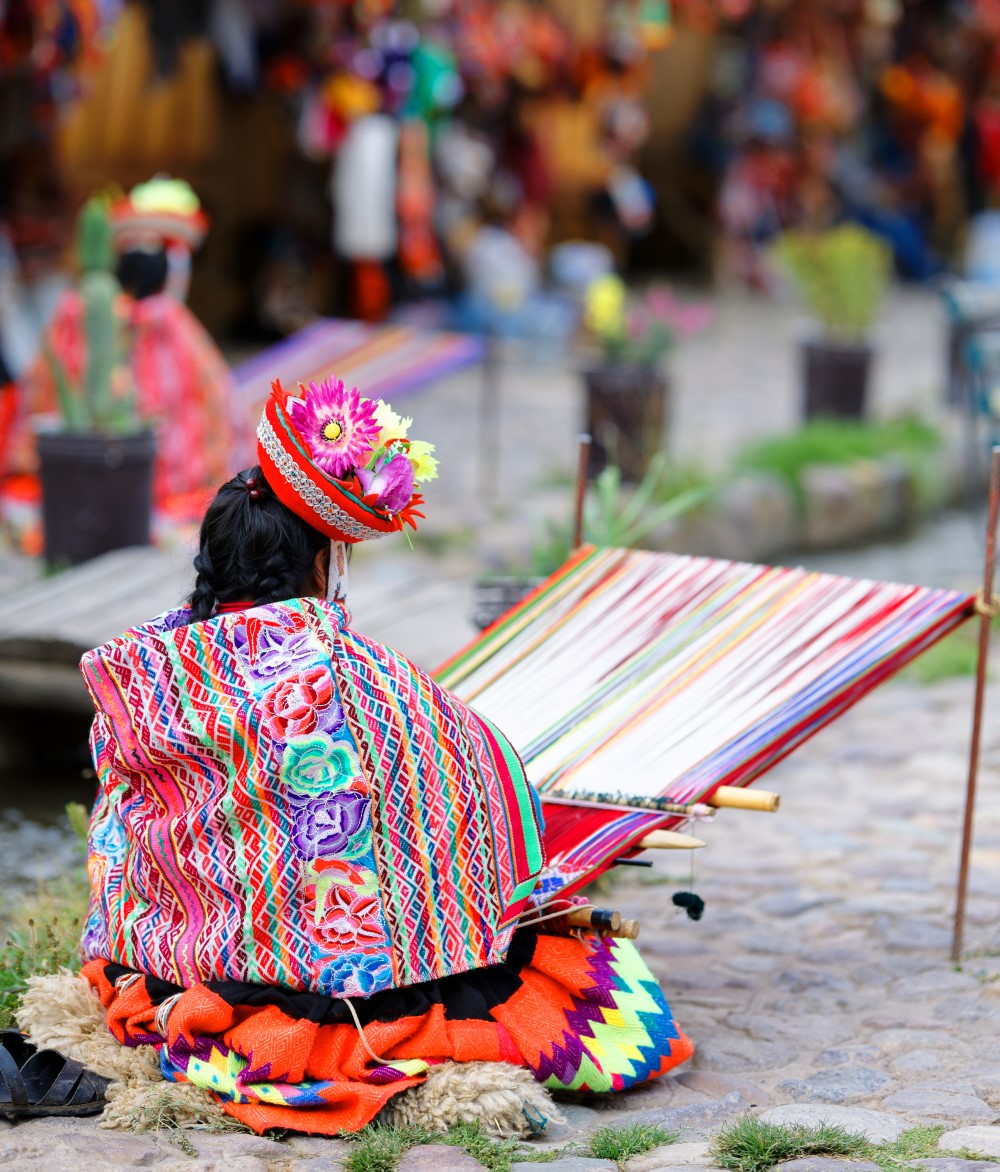
Thirty minutes before our train departure, the aged stone walls of civilization finally appeared. Fog, dust, and old row houses on the quiet, empty streets made for a Sleepy Hollow meets Jerusalem meets the Death Star Trench Run feeling. At the town square, Adri’s Spanish skills saved us as we were pointed toward a rough, non-obvious, dirt road down to the train station. Ollantataytambo, a fantastic town filled with terraces and ruins, is famous as the major battleground where Pizarro’s brother was defeated. We’d explore on our return trip, but for now our train was boarding. At the station I vigorously repacked our luggage down to the Machu Picchu necessities, still smarting from the $30 mugging to park in an empty lot. The clock was merciless. Darkness and Brian’s insistence on helping pack was working against me, so I sent him with his mother down the long hill to hold the train. Andy loitered nearby, ailing but smugly proud of the one bachelor bag that served his every need. Minutes later: “The train is leaving!” I’m not even sure of what language I heard it in. Zippers were tugged and half-filled luggage carcasses were crammed into the truck like a Samsonite apocalypse. Our chosen bags plowed the gravel lot as the attendant barked at our heels like a merciless bipedal Chihuahua. The ticket takers were aghast that there was anyone left to board, and shouted blindly down the hill where the train sat out of sight. It was leaving, now. Visions of my poor wife being stranded with a 2 year old in a strange, isolated town lit a fire under my feet. Chihuahua grabbed a bag and the three of us ran down the hill like geese from buckshot. Pain, panic, and awkwardness blended together dashed past the stalls of amused vendors breaking up shop for the night. Somewhere to my right, I could almost swear I heard some smartass tooting the William Tell Overture on a pan flute.
We made the train, sweaty and panting. There was no point in admiring the view at night, so I sat back for a long needed nap as the train rolled down the valley, blissfully unaware that not one piece of my own clothing had been packed.
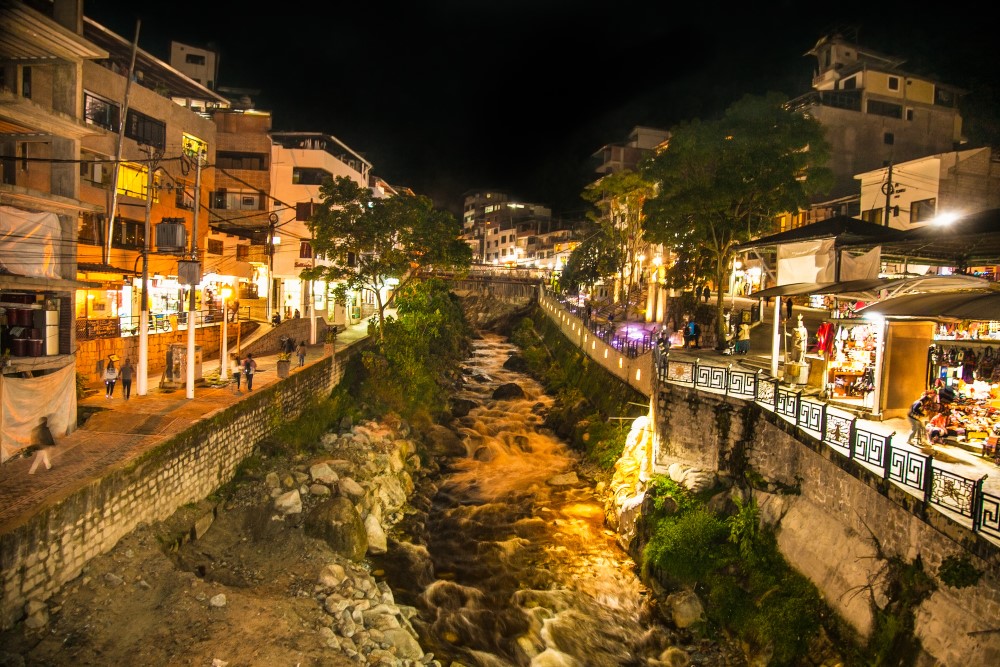
Aguas Calientes
Aguas Calientes is an interesting village, named after hot springs with a mixed reputation. There are no automobiles except for the busses that ferry tourists to Machu Picchu; no matter since the town is small enough to walk. Its focal point is the train trench that digs through the length of it. Running parallel on the edge of town is the Urubamba (Vilcanota) River, which in March was a horizontal Niagara, more violent than anything I’d ever seen. Its rapids churned like a moistened hell that looked to be Class 1000, as in ‘will crush life instantly.’ The sheer dark mountain walls tower just across the river, squeezing the valley into a dark chasm. Our balcony at Hostal (Hotel) Presidente perched just above the roaring torrent. I spent hours admiring the humbling scene alone while Adri and Brian went shopping for kaleidoscopic alpaca clothing. Meanwhile, our friend Andy lay bedded in horizontal strife versus a beastly microorganism invasion.

Machu Picchu can/will actually sell out in the high season (June-September). In July 2011 hundreds of people were turned away because it hit a self-imposed capacity, so purchase ahead of time. Mr. Wingin’ It didn’t do that of course since rainy season is less crowded. Tickets cannot be purchased at the gate to Machu Picchu, but rather a tourism office hidden on a narrow street (see earlier reference to Peruvian aversion to public information.) Tickets cost around $50 and must be bought with cash and, oddly, a passport for each person. Apparently you can sneak into Peru illegally, but you can’t see Machu Picchu if you do. The bus that shuttles you up to Machu Picchu is another $18 per person and must be purchased at yet another mysterious location (hint, look for busses.) There is a trail up to Machu Picchu that splits straight up through the middle of the paved switchbacks, but you’ll spend a lot of time dodging shuttle busses, climbing stairs, and wishing you had eyes on the back of your head, because that’s where the view is.
Machu Picchu
Machu Picchu Day, finally! The sun hadn’t yet peeked into the narrow valley window so I scurried in the dark as if it was Christmas morning. The park opens at 5:30a.m., so I was ready to get my full day of Incan eye candy. I also wanted a crack at hiking up Huayna Picchu, the large peak looming just behind every picture of the ruins. I was ready. Getting dressed was easy since I had no luggage. I grabbed the camera, the camcorder, some snacks, took a shower, found the tickets, passports, key, and was all set.
My enthusiasm was not shared. Three corpses of three sizes lay in three beds. Any hint of life was hidden by the growling river. I dropped my bags and prepared to become the least popular person in the room.
The first train comes in by 10 o’clock, so that’s when the big crowds arrive. Only suckers wait for that to happen. We’re suckers. After waiting with the sightseeing herd, our bus rolled across the river and winded slowly up thirty minutes of switchbacks spent bartering snacks with Brian for good behavior.

Machu PicchuThe bus parked. Joy! My camera was poised to fire for… for… a snack shop. Really? I stood, baffled that someone could pause for coffee this close to life’s most thrilling vista. My wife, meanwhile, stepped toward the counter without the slightest hesitation. Two coffees later we pushed through gate, had our passports stamped (seriously), and joined the ant-trail of tourist lemmings up an ever-steepening trail. Despite an eyeful of an old lady’s khaki derriere, I kept faith that the view would improve. Bee-lining to the top for the Kodak moment, we selected the steepest forks up through the forest. Brian’s boundless energy met a boundary halfway up and had to recharge on daddy’s shoulders. Andy, still in an epic struggle with a billion micro-organisms, had found new life at the gate, but was eroding at each step. After a futile attempt to trade places with Brian at the last fork up, Andy mumbled soft curses not heard since the last human sacrifice. We trudged upward through the tunnel of soil and foliage, seeking sky.
Finally, light. We emerged from the forest into the open air. And there it was… CLOUDS. Wait! A breeze… waitaminnit, waitaminnit, waitaminnit… shazam!! Machu Picchu!! It was spectacular in almost every direction you turned. Cotton white clouds dotted the neighboring peaks. Some hung comfortably, while others moseyed slowly through the ruins like lazy jaywalkers. Huayna Picchu, the iconic peak above the ruins, played peek-a-boo with an armada of intimidating Japanese cameras on loan from the Super Bowl. Alas, seeing a photo of Machu Picchu without visiting is like admiring a cheeseburger ad without eating one.
Anyone can google Machu Picchu to get the basic layout, so I won’t rehash it. Come to think of it, I don’t know it. Early on in my travel research I quickly picked on something that doesn’t get emphasized enough: nobody really knows much about who built it, what it was for, and what most of the ruins even were. There’s a lot of conjecture, some of it credible, but tour guides are still regurgitating the same names and theories that Hiram Bingham pulled from beneath his underwear one hundred years ago. With the exception of some isolated huts clearly meant for the in-laws, Machu Picchu is still a mystery… and that’s how I talked myself out of blowing money on a pricey tour guide. Besides, why pay a guide to slow me down when I’ve got family to do that for free? Every twenty steps Adri insisted on a photo, both with and without the ugly attractive Peruvian hats she generously purchased for us. I began to seriously miss the days when you could run out of film. Brian, of course, took advantage of every pause. Ever the rock and dirt lover, he had entered a veritable Eden of boulders, stones, and pebbles. At every opportunity, he’d roll on the ground in a frenzy that resembled making snow angels during a heart attack.

Then there were the alpacas; cute, tame, tagged and wandering around like they own the place (and did for 400 years.) They seem to have free rein to go where they want, and do “go” where they want, so watch your step. These smaller cousins of the llamas were remarkably tolerant of tourists and have posed for more photos than the Statue of Liberty. The alpacas strolled up and down the terraces munching the grass whenever they felt obliged, thus sparing some lucky gardener from the worst lawn mowing job on earth. Alpaca trumped rock and Brian made it clear that his new brief purpose in life was to shove grass into the creature’s toothy orifice, at least until he came across a newer, grubbier rock to deviate his meandering attention.
The problem with beautiful puffy clouds decorating the peaks is that they contain floating water. It was a sad, moist reminder that there is a reason that there is a low season and we were in it. By that point I had marched our tribe to the far end of the ruins where we sheltered in a pair of covered Incan structures resembling baseball dugouts. While the others snacked, slept, or played in the mud, I rushed to the entrance to Huayna Picchu, just around the corner – Denied.
Or whatever than word is in Spanish. Four hundred people, the daily limit, had already entered. The attendant/gatekeeper/bored guy attempted to make me feel better by showing be how close I had come. That backfired. The last entrant beat me there by 11 minutes. I’ve heard the hike up is scary, windy, slippery, drizzly, and generally miserable. Sadly I’ll never know that joy. Passing on the opportunity to accept defeat gracefully, I vented at my sloth-footed companions, who recommended I visit the Complaints Department, just three feet beyond the edge of the cliff.

Rain fizzled to drizzle, so we re-donned nuestros cheapo ponchos. Now we were seriously ready to ponder some rock walls. If the Incas were masters of anything, it was the art of stacking rocks, vertically. Not so much rock floors or rock ceilings… mostly just walls. We meandered in and out of the roofless apartments, each carpeted with moist grass. We could only guess what each room was for, although I did christen one ‘The Lavatory’.
“Unbelievable!”, “Incredible!”, “How could they do that?” We overheard that often. To answer the question: put a rock on the ground, sand the bejeezus out of another rock until it fits perfectly, repeat 800,000 times. They didn’t use a sanding wheel because that’s a wheel, and they didn’t have those (really, guys, really?) Since they weren’t occupied with other things such as inventing the wheel, the Incas had plenty of time on their hands to sand. We admired them, posed with them, huddled beside them, and quite frankly did about everything a person can do with an ancient rock wall. Did I say ‘ancient’? Not really. They’re 600 years old. New York City was founded less than 200 years later. There are plenty of apartments (‘flats’, pardon me) in London that are older than Machu Picchu, which just seems ancient because they employed the same technology Damascus did in 4000 BC. Now Damascus, that’s ancient. Simply put, Machu Picchu is the consequence of not paying the gardener for 500 years.
The place with the $10 million view is up at the Intihuatana Stone, a fancy carved up rock atop a hill. Apparently it can identify the solstices, but we assume there was more to it. I imagined it was a chaise lounge for a very patient sunbather. The view is truly stunning for all a 360 degrees. A picture can’t capture it, although we tried. Just go there, enjoy it, and don’t bring a 2 year old. Of course Brian would pick this moment to throw a hissy fit. It wasn’t a ‘weep, weep, hold me mommy’ hissy fit either, but rather a ‘let me down right now so that I can run around, hit people with my stick, and possibly slip over a 30ft. sheer drop’ type of fit. Brian bathed the ruins with his displeasure and tourists far and wide turned toward the stone to see if sacrifices had resumed. All was well thirty seconds later as Brian finally cried himself unconscious, his stick still in his limp hand.

Incan stairs were even more abundant than Incan walls. Some were nice and gradual; others had angles somewhere between skiing and skydiving. I sometimes wondered whether I was using a stairway or a ladder. Add slick wet rocks to the mix and we were just a few banana peels away from mass disaster. After hours of schlepping Brian up and down between various altitudes, I began to feel like Andy, who had already retreated toward his valley sickbed far below. With only an hour left before closing, Adri took Brian back to Aguas Calientes to do some unfettered shopping. I bid a sad farewell to the last of our cash.
Finally, however, I had time to explore on my own. As the last of the cameras slunk back to the busses, I found a terrace to admire the ruins in peaceful solitude. I tried forcing myself to admire the ruins and contemplate the long gone inhabitants, but my eyes kept wandering toward the scenery to my right and left. It wasn’t, after all the view of the city that brought people up here, but the view from the city. I imagined the Grand Canyon one thousand years in the future with tourists walking in and out of the ruined visitor center, snapping pictures of crumbling concrete. Messages found in the bathroom stall would be gawked at and contemplated. What did the mysterious seven digits represent? What sort of “Good Time” could be had with those numbers? All the while, the tourists were barely acknowledging the canyon’s beauty off to the side. I quietly gazed toward the misty green mountains.
Alone now, I let the clouds pass through me like a ghost. I imagined myself an Inca. I imagined this being home. I turned with a bitter smile. It was a long return back to California. It was time I began.



